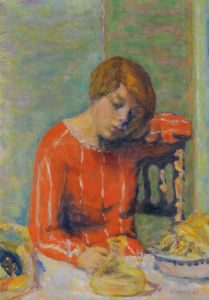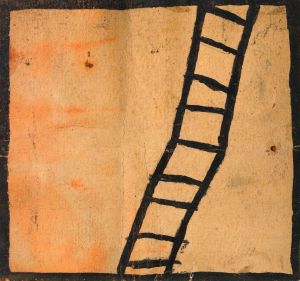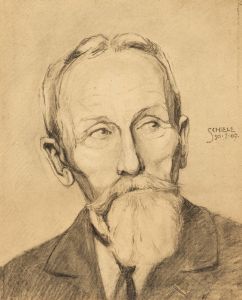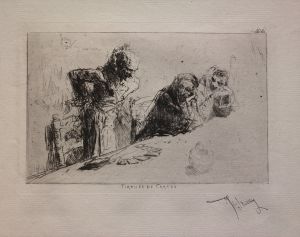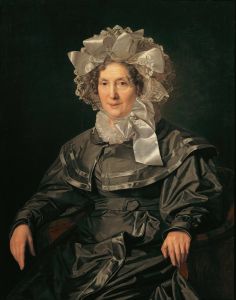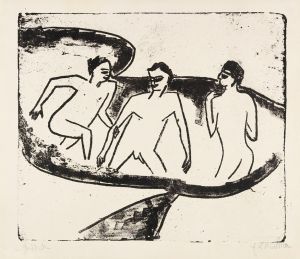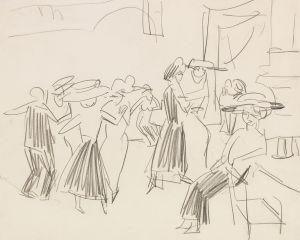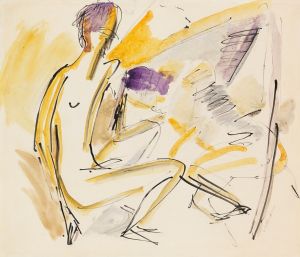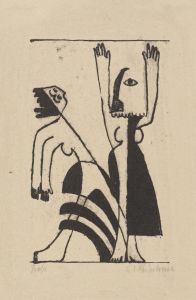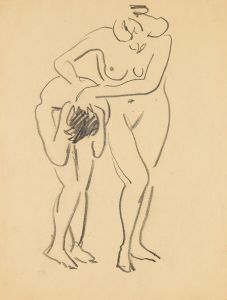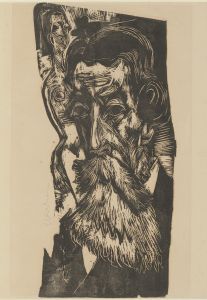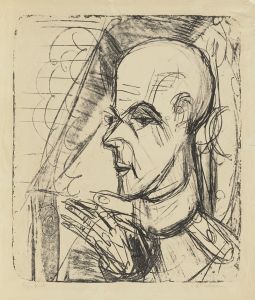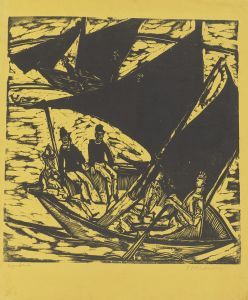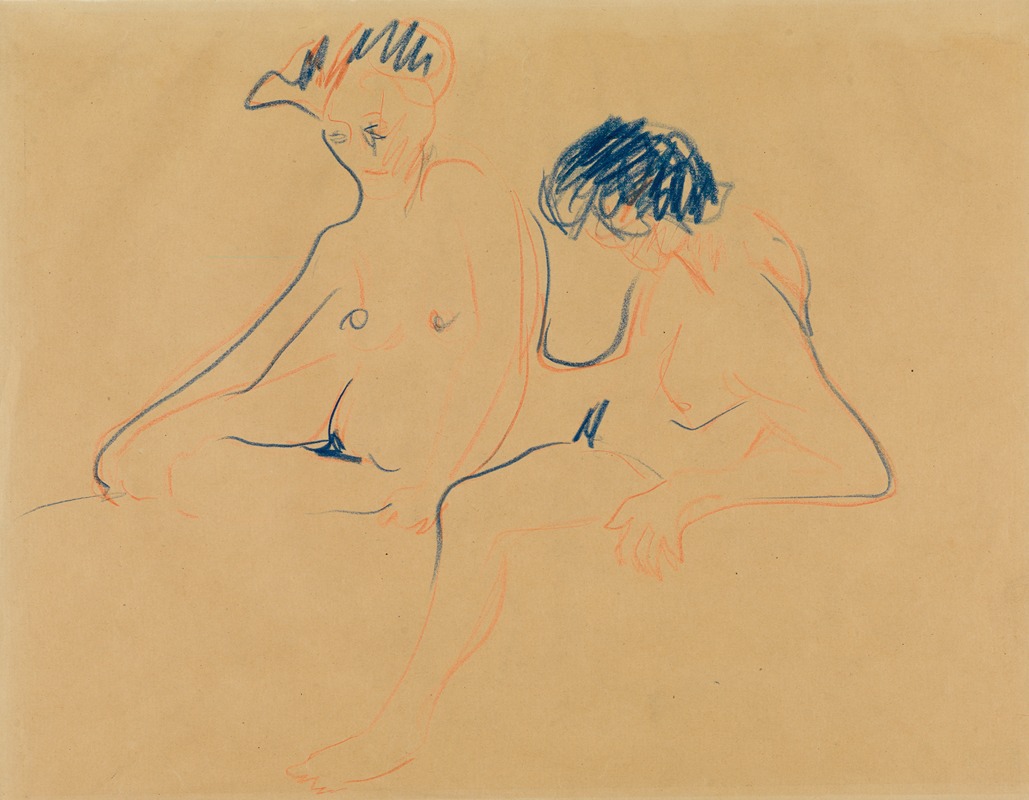
Zwei sitzende Akte
A hand-painted replica of Ernst Ludwig Kirchner’s masterpiece Zwei sitzende Akte, meticulously crafted by professional artists to capture the true essence of the original. Each piece is created with museum-quality canvas and rare mineral pigments, carefully painted by experienced artists with delicate brushstrokes and rich, layered colors to perfectly recreate the texture of the original artwork. Unlike machine-printed reproductions, this hand-painted version brings the painting to life, infused with the artist’s emotions and skill in every stroke. Whether for personal collection or home decoration, it instantly elevates the artistic atmosphere of any space.
Ernst Ludwig Kirchner was a prominent German expressionist painter and one of the founding members of the influential art group Die Brücke (The Bridge), which played a crucial role in the development of modern art in the early 20th century. Kirchner's work is characterized by its bold use of color, dynamic compositions, and a focus on the human figure, often exploring themes of modernity and the human condition.
"Zwei sitzende Akte" (Two Seated Nudes) is one of Kirchner's notable works, reflecting his interest in the human form and his distinctive expressionist style. Painted in 1910, this piece exemplifies Kirchner's exploration of the nude figure, a subject that he and other members of Die Brücke frequently revisited. The painting features two female nudes seated in a relaxed pose, rendered with the vibrant colors and expressive brushwork that are hallmarks of Kirchner's style.
The composition of "Zwei sitzende Akte" is both intimate and dynamic, capturing the essence of the human body in a way that is both raw and expressive. Kirchner's use of color is particularly striking, with bold contrasts and a palette that conveys emotion and energy. The figures are depicted with elongated forms and exaggerated features, a technique that Kirchner employed to convey psychological depth and emotional intensity.
Kirchner's approach to the nude was influenced by a variety of sources, including non-Western art, which he admired for its directness and vitality. He was also inspired by the works of earlier artists such as Edvard Munch and Vincent van Gogh, whose use of color and form had a profound impact on his development as an artist. In "Zwei sitzende Akte," Kirchner combines these influences with his own unique vision, creating a work that is both innovative and deeply personal.
The painting reflects the broader aims of Die Brücke, which sought to bridge the gap between traditional academic art and the new, more expressive forms that were emerging at the time. The group was interested in exploring the emotional and psychological aspects of art, often focusing on themes of alienation, modernity, and the human experience. Kirchner's work, including "Zwei sitzende Akte," embodies these themes, offering a glimpse into the artist's exploration of the human psyche and the complexities of modern life.
Throughout his career, Kirchner faced numerous challenges, including the impact of World War I and the rise of the Nazi regime, which labeled his work as "degenerate art." Despite these obstacles, Kirchner's legacy as a pioneering expressionist artist remains significant. His work continues to be celebrated for its boldness, emotional depth, and innovative approach to form and color.
"Zwei sitzende Akte" is housed in a private collection, and like many of Kirchner's works, it is highly regarded for its contribution to the expressionist movement and its influence on subsequent generations of artists. Kirchner's ability to capture the essence of the human form with such intensity and emotion ensures that his work remains relevant and impactful, resonating with audiences even today.





![Nature morte au bougeoir [The Candlestick]](/imgs/216620/s/edouard-vuillard-nature-morte-au-bougeoir-the-candlestick-5fbea233.jpg)
